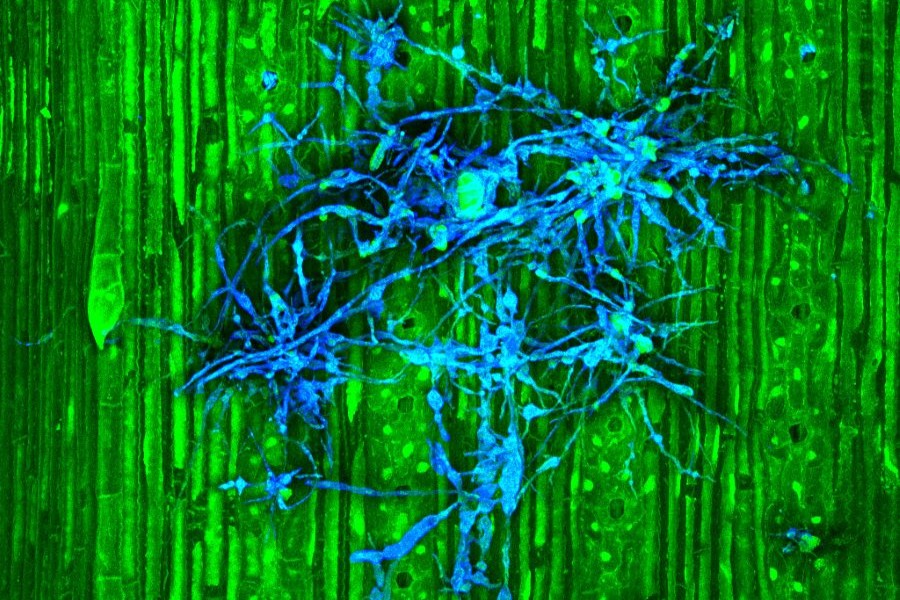A life in science and art
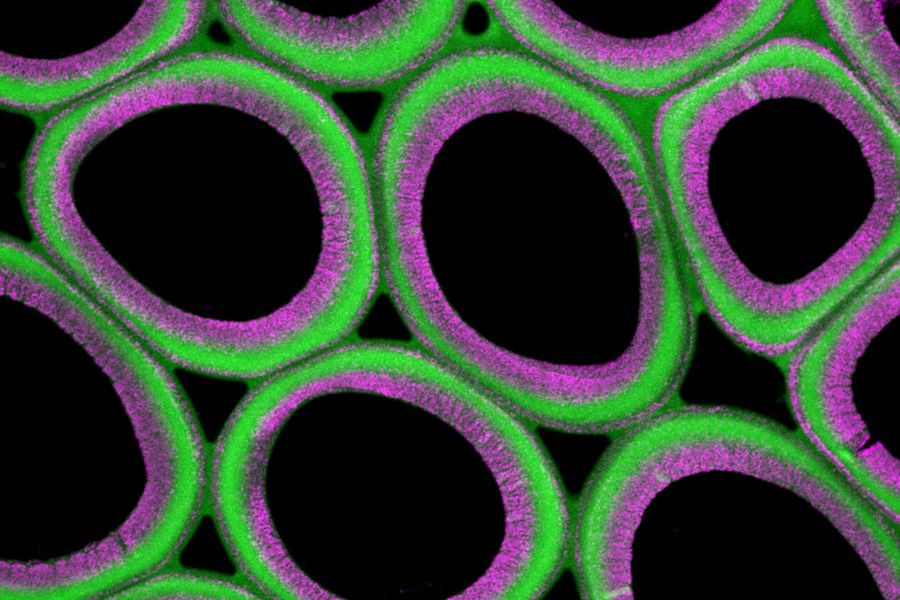
After an extraordinary 45-year career, Dr Lloyd Donaldson retires from Scion at the end of June, leaving behind a legacy that blends scientific innovation with artistic expression. As an internationally recognised microscopist and wood anatomist, Lloyd has transformed how researchers see and understand plant materials – revealing their structure and beauty.
Lloyd’s scientific journey began with a Bachelor of Science (Botany) from the University of Auckland in 1980. He joined the Forest Research Institute (now Scion) as a research assistant in wood quality that same year. He continued his studies alongside this role, earning a Master’s in Plant and Microbial Science and a doctorate in wood science from the University of Canterbury.
“I haven’t spent 45 years looking at the same thing,” Lloyd says. “You’re always doing something new – that’s what kept it interesting. Microscopy was a natural progression from wood anatomy. Once I started, I was hooked,” he says.
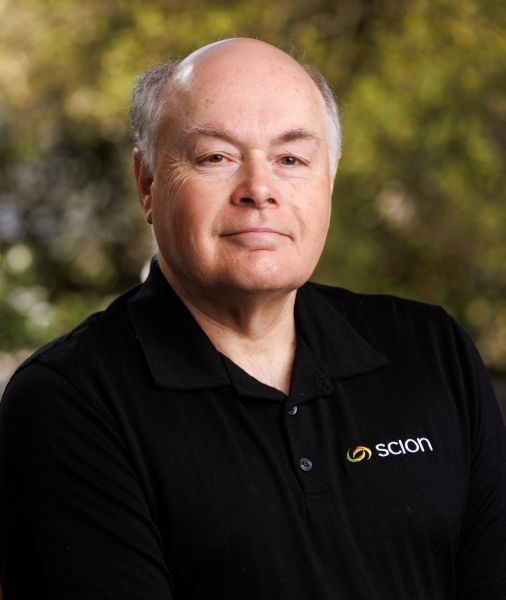
Microscopy art
At Scion, Lloyd had access to tools few other scientists in the world could match. “One of the major advantages here was the equipment,” he says.
“We had one of the first-generation confocal microscopes in a wood science lab - possibly the only one at the time. That gave me a huge edge. Overseas, you’re often competing for access. Here, I had the flexibility to work when and how I needed.”
Lloyd’s work revealed the fine structure of wood, how plant cells respond to stress and how bio-based materials could be better used for industry applications. In 2010, he began using fluorescence lifetime imaging (FLIM) to study lignin, a key component of wood. Instead of simply locating lignin, FLIM showed how it interacts with other parts of the cell wall, giving scientists a much clearer picture of wood’s internal chemistry. This pioneering approach to fluorescence imaging has since been widely adopted in plant and biomaterial research labs around the world.
Scion team lead Mathias Sorieul says Lloyd’s microscopy has been foundational to some of Scion’s most groundbreaking achievements. He was, for example, instrumental in characterising the first CRISPR gene-edited conifers. “Scion recently launched the world’s first field trial of gene-edited conifers using CRISPR to turn off specific genes in pines, to improve timber quality and support New Zealand’s bioeconomy,” Mathias says.
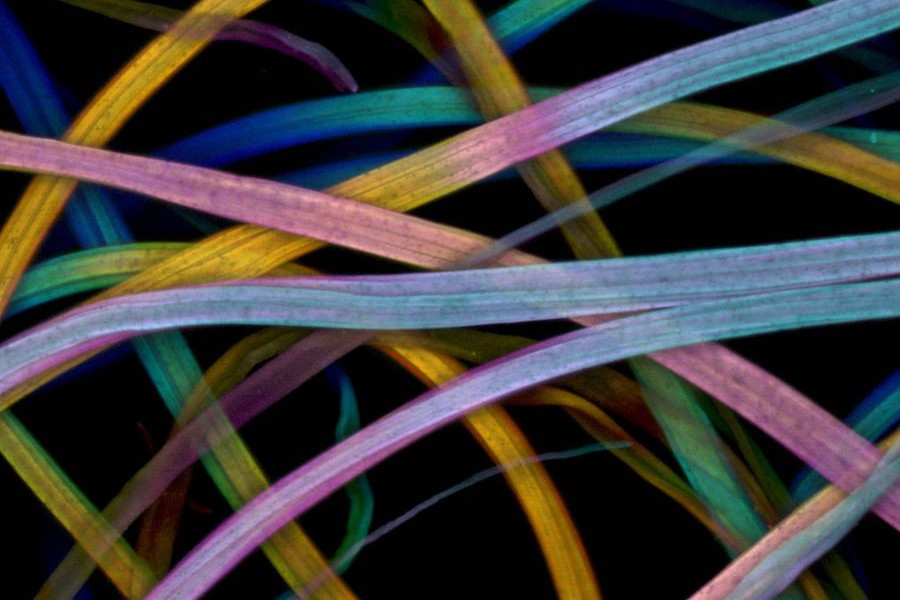
“Lloyd’s microscopy revealed changes in the cell wall that no other technique could have captured. At a cellular level, wood is a challenging material to image. Over several decades, Lloyd has refined his sample preparation techniques, which is why his images are visually striking and scientifically insightful.
“His images often serve as the highlight at the end of a manuscript, providing vivid confirmation of the biochemical characterisation performed throughout the study.”
Lloyd’s photographs have graced the covers of leading journals and featured in hundreds of publications. One particularly striking image of cotton fibres earned him eighth place in the Nikon Small World Photomicrography Competition – an international honour.
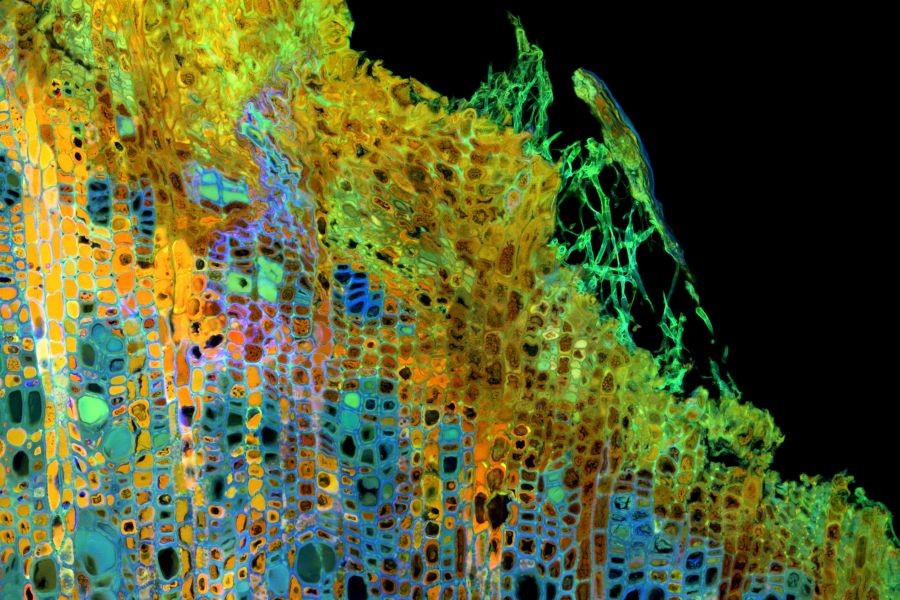
"The quality of his work has made him a leading figure in the global cell wall research community,” Mathias says. “It’s difficult to write a paper on conifer cell walls without citing one of his studies.”
For Lloyd, it’s simple. “I like creating reports and visuals that bring everything together,” he says. “If you can make something complex clear - and even beautiful - that’s really satisfying.”
I like creating reports and visuals that bring everything together. If you can make something complex clear - and even beautiful - that’s really satisfying. - Lloyd Donaldson
A celebrated global career
Lloyd’s expertise has taken him around the world. He’s worked in France and China on multiple occasions, visited Australia and Bali and spent time in Sweden - where he experienced “a Christmas like no other” at –25°C. He also travelled to Belgrade, Serbia, where remnants of the 1999 NATO bombing campaign were still evident.
Lloyd traveled to Europe over the 2024/25 summer – at his own cost – to give keynote talks and says he always learns something when he travels.
“Being abroad helps you focus without distractions,” he says. “It broadens your thinking, builds skills and helps you meet like-minded people. I always recommend it, even if you have to fund it yourself.”
Lloyd has also carved a niche in wood identification – a specialised field he plans to continue into retirement. Over the years, he has helped identify the timber used in historical canoes from Tahiti and Hawaii, assisting researchers trying to trace the origins of these significant cultural artefacts.

“Lloyd’s cross-disciplinary approach is rare and invaluable,” Mathias says. “He connects microscopy, wood chemistry, plant physiology and imaging in ways that solve real-world problems - from timber applications to cultural heritage. It’s an extraordinary contribution.”
His achievements have been recognised through numerous accolades, including Science New Zealand Individual Lifetime Achievement Award in 2021. Most recently, Lloyd was granted Emeritus Scientist status, honouring his scientific eminence and enduring impact on his field.
Scion Forest Genetics and Biotechnology research group leader Gareth Lloyd-Jones greatly valued supporting the development of microscopy capabilities led by Lloyd. “He is one of a kind, combining a deep appreciation for the beauty and precision of scientific investigation with a strong commitment to supporting the research of his colleagues. Lloyd seamlessly balances technical expertise with an impressive publication record, making him an invaluable asset to our research community.
Lloyd’s cross-disciplinary approach is rare and invaluable. He connects microscopy, wood chemistry, plant physiology and imaging in ways that solve real-world problems - from timber applications to cultural heritage. It’s an extraordinary contribution. - Mathias Sorieul, Scion Team Lead
Lloyd will remain active in the scientific community as co-editor-in-chief of the IAWA Journal and by continuing to offer wood identification advice on a voluntary basis.
When he’s not “working”, you’ll likely find him walking in the forest or tending his garden – still observing, curious and drawn to the patterns of nature that inspired his remarkable career.
